For a lot of people, sitting in front of a line of three shots of tequila might conjure some flashbacks involving a pinch of salt, a lemon wedge and a pounding headache. But the shots that come in a flight of tequila at Zapoteca, a new Mexican restaurant and tequileria in Portland, are meant to be sipped and savored like a fine single malt Scotch, not downed in one gulp by a drunken college student.
Sergio Ramos, managing partner and resident tequila expert at the restaurant, stops customers in their tracks before they shoot back their tequila and explains to them how they should be drinking it.
“I think the tequila industry is doing a really good job of focusing on quality versus quantity,” Ramos said, “and they’re putting a really good product out there now.”
The result is that tequilerias are really hot right now in the United States, especially in cities like New York, San Francisco and Houston. Even Boston, which is a bit late to the party, has at least five new tequilerias.
Celebrities have also gotten into the act. Rocker Sammy Hagar’s Cabo Wabo tequilas – one of the brands served at Zapoteca – have gotten good ratings, and a couple of years ago, pop star Justin Timberlake launched his own well-regarded tequila, 901, named after his hometown Memphis area code.
Sales of tequila soared to 11.6 million cases in 2010, which represents a 63 percent increase over sales a decade ago, according to the Distilled Spirits Council of the United States.
From 2009 to 2010, while sales of gin, Scotch and Canadian whiskeys went down, sales across the entire tequila industry went up 3.6 percent. That bump was driven by a 17 percent increase in high-end premium tequilas, such as El Jimador and Antiguo Tequila Blanco.
“People are becoming more and more interested in spirits overall, and they’re starting to – like wine – educate themselves on the flavor and what it means to be a tequila,” said Danielle Eddy of the Distilled Spirits Council.
MAINE CATCHING UP
As is often the case, Maine is a bit behind the curve. But with the opening of Zapoteca, which serves almost 90 kinds of tequila, and premium tequilas now being served at a handful of other restaurants around the state, Mainers can learn the difference between blanco, reposado and anejo.
Tequila is made from the blue agave plant. To be called tequila, it has to be distilled in one of five Mexican states, most of them in the central Pacific region near Guadalajara. The best-known tequila-producing region is the state of Jalisco (home to the town of Tequila), which is fast becoming a new tourist destination for Americans.
“The process of tequila is really interesting,” said Tom Bard, proprietor of Zapoteca. “You get the big agave, and they cut off all the leaves. You get the core, like the heart of an artichoke, and then that’s actually thrown in a big pit and covered in coals and a tarp and steamed for, like, three days. Then they take that – it gets real soft like mush – then that’s what they grind up, and that’s squeezed and they distill from that particular product.”
Ramos was born in Guadalajara, and remembers his grandfather taking him to the agave fields when he was a boy.
“You can grow agave plant anywhere, pretty much, but you can’t get tequila out of that plant. There’s something in the soil, something in the climate” in Jalisco, he said.
By Mexican law, tequila must be at least 51 percent agave; the best tequilas are 100 percent agave, and will be marked on the bottle as such. Tequilas that are not 100 percent agave contain other added sugars, and are called mixtos.
Mezcal, a cousin of tequila, is made from other species of agave plants. Mezcal is the one that has the worm in the bottle, a marketing gimmick cooked up decades ago that has entertained generations of frat boys.
TEQUILA ETIQUETTE
Ramos and Bard recently set a flight of Corzo tequila in front of me and walked me through the proper way to sample it.
The shots come nestled into three holes lined up on a wooden board, with a card the size of a business card placed in front of each tequila. The cards describe the flavors found in each shot, and customers are welcome to take them home for future reference if they find a tequila they like.
On the far left of the tequilas is another shot glass filled with a red substance that looks like homemade tomato soup or a really good Bloody Mary mix.
“In Mexico, when you order tequilas, you get a little thing called a sangrita,” Bard said. “We make our own. Ours is a fire-roasted tomatillo sangrita. It’s similar to a Bloody Mary mix, but it’s a little more spicy and it’s got more flavor notes, a little bit more acid in it.”
Sangrita is meant to be sipped in between tequilas to cleanse the palate and enhance the flavor of the next tequila.
“The sweetness from the citrus helps to calm that peppery spice of the agave,” said Eddy of the Distilled Spirits Council, “yet the spice in the sangrita will help to bring out the sweeter notes in the tequila. It’s a great pair, and it’s very traditional.”
Where to start?
“This is the same tequila, from there to there to there,” Bard said, pointing at the shots. “It’s just that that’s blanco, and that’s not aged. And then reposado means ‘rested.’ And then anejo means ‘aged’ or old.”
Blanco is a clear, unaged tequila; Ramos recommends it to people who like to drink vodka. The card in front of the tequila told me that this shot of Corzo Silver had hints of tropical fruit and peppery spice, with a delicate finish. Blanco is the tequila that has the truest flavor of the agave plant.
I took a sip, and definitely tasted the peppery spice of the agave. Then I took a sip of the sangrita, which was delicious all on its own.
The next shot was Corzo Reposado. To be called a reposado, the tequila must be aged two months to one year. The tequila industry uses wooden barrels (usually American or French oak) and often recycled whiskey barrels to age its reposado. The aging process gives the drink its light golden color and depth of flavor. Ramos recommends reposado to people who “drink all over the place,” meaning they like a variety of spirits.
Although the shot had a light golden color, this was not, Bard and Ramos assured me, what Americans call a “gold tequila.” Gold tequilas are, Ramos said, “just a white tequila with food coloring, really.”
My tequila card said the Corzo Resposado would have hints of oak with a custard finish composed of lemon, coconut, baked banana and brown spice.
I took one sip, and knew immediately that I preferred this over the blanco – a common reaction, Bard said. On a second sip, the flavor of coconut came forward and filled my mouth. That’s something I never expected from a tequila.
Another sip of sangrita, then I turned to the third shot, an anejo that had been aged one to three years. My card said its flavors would be reminiscent of warm caramel and golden raisin, with floral tones that lead to rich honey, and a toasted oak finish with baked fruits, spice and toffee.
Whew.
It reminded me of Scotch. That’s apparently another common reaction, and one reason Ramos recommends anejos to Scotch drinkers.
“I’ve seen a lot of Scotch drinkers that are becoming tequila drinkers,” Bard said. “It’s the same profile.”
Even smoother and creamier, with a light smokiness, was the Cabo Wabo Uno, one of the ultra-premium brands. “When you taste it,” Ramos warned, “you’re going to go ‘Wow.’ “
He was right. It had a gorgeous caramel color too.
The next generation of tequilas, Ramos said, will come from pre-selected blue agave plants that have been pampered on the ground, tenderly distilled, and then aged unlike any other tequila. “Some of the tequilas they’re aging right now are probably going to be a thousand dollars,” he said.
So what does Ramos drink?
He likes to nurse a glass of Centenario, which he calls “old man tequila,” because it has a lot of flavor and is made with a process that’s been used for more than 200 years.
Line ’em up.
Staff Writer Meredith Goad can be contacted at 791-6332 or at: mgoad@pressherald.com
Twitter: MeredithGoad
Send questions/comments to the editors.


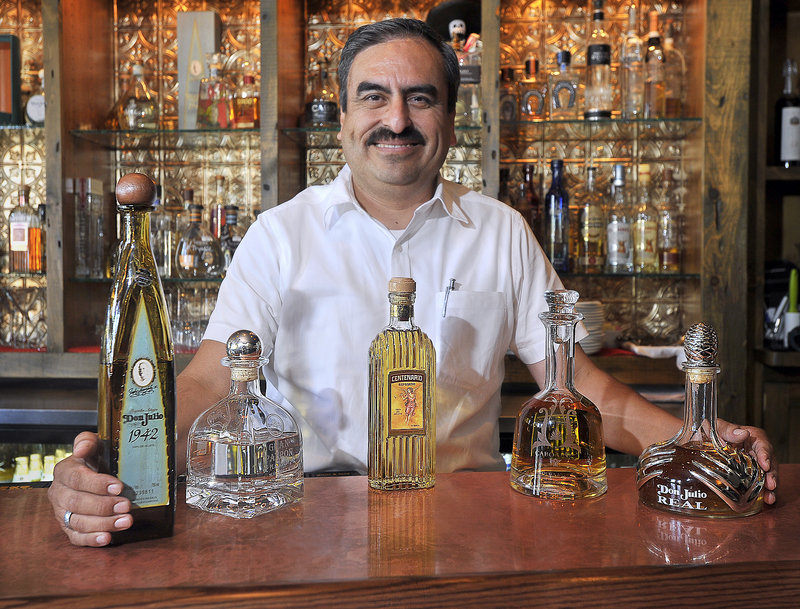
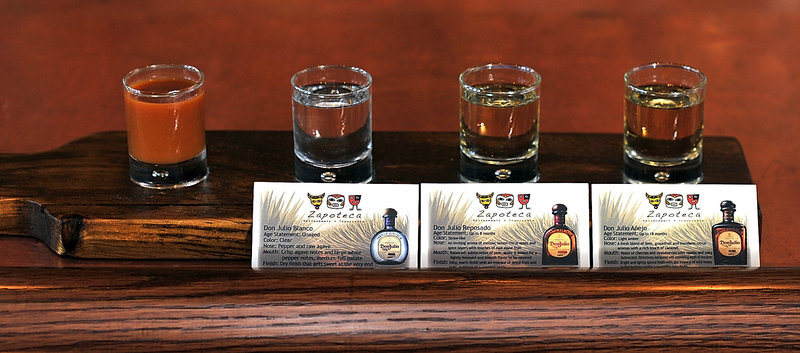
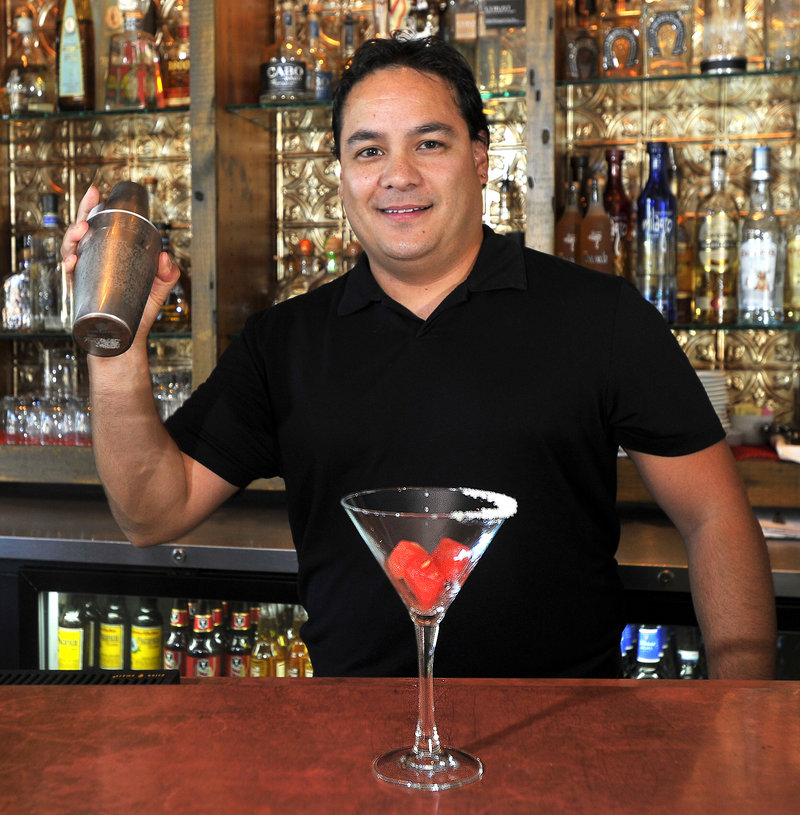
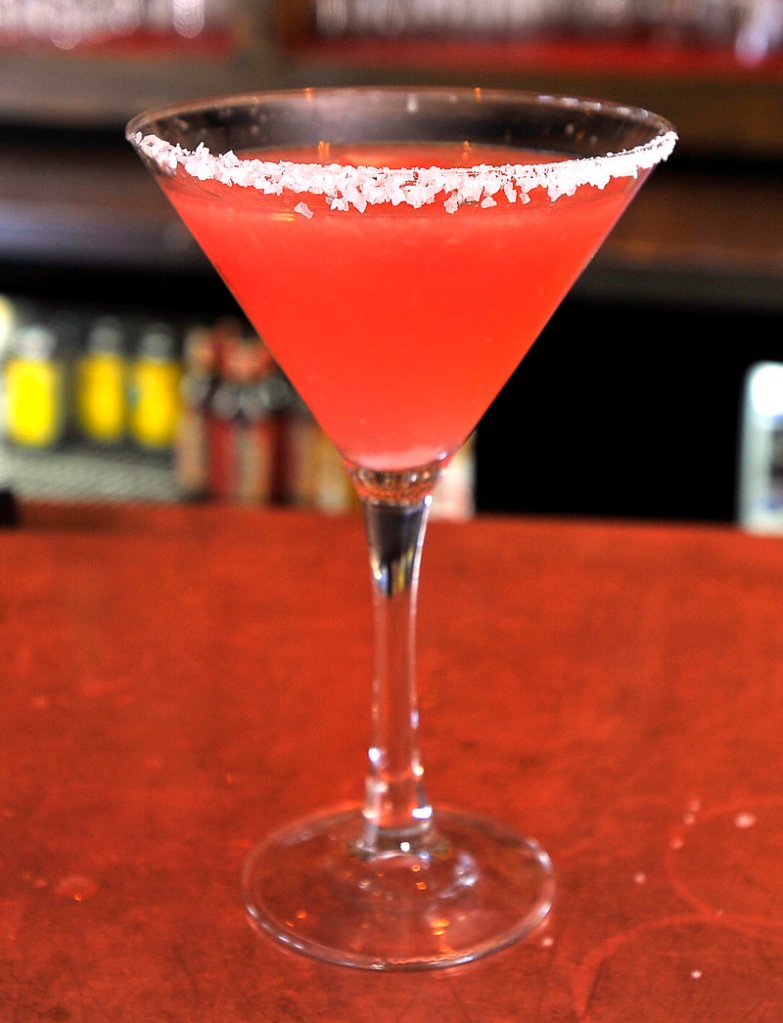
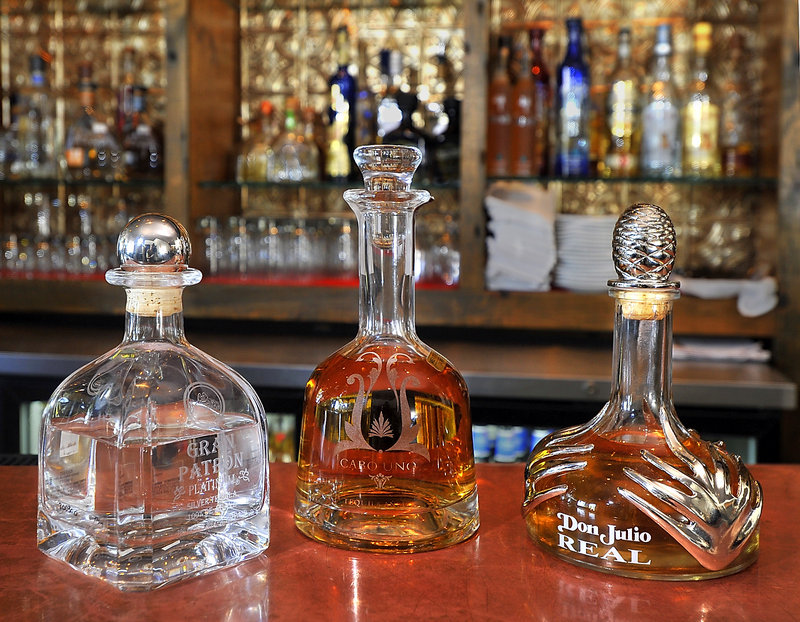

Success. Please wait for the page to reload. If the page does not reload within 5 seconds, please refresh the page.
Enter your email and password to access comments.
Hi, to comment on stories you must . This profile is in addition to your subscription and website login.
Already have a commenting profile? .
Invalid username/password.
Please check your email to confirm and complete your registration.
Only subscribers are eligible to post comments. Please subscribe or login first for digital access. Here’s why.
Use the form below to reset your password. When you've submitted your account email, we will send an email with a reset code.